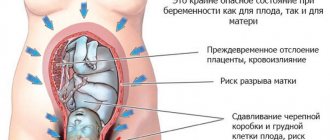Pregnancy, children > Caring for a newborn > How to give Plantex to newborns - use, safety
When a child is born, his parents are incredibly happy that their long-awaited baby has been born. However, this time can hardly be called calm and carefree. After two weeks from birth, babies often begin to experience colic.
This is an ordinary physiological process in the formation of a child, since he develops and his internal organs along with him. Although this process is safe, the baby experiences discomfort at this time, crying to his parents about it. How to give Plantex to newborns and when it is better to stop taking the drug, read on.
Colic in a child
The first causes of colic:
- increased body temperature,
- improper breastfeeding,
- inappropriate mixture
- side effects from medications.
The child begins to develop gas, bloating, crying, irritability, and restless behavior. Every mother tries to find a solution to the problem, while looking for the safest methods. Doctors prescribe safe plant-based medications, such as Plantex.
As described earlier in the article, the child’s digestive tract is still forming, developing and improving. If in the first days of life a child has enough colostrum, then with the advent of breast milk in his life, the gastrointestinal tract is rebuilt, trying to adapt. The diet changes, which causes colic, stomach pain, and excess gas.
Most parents first try to cope with the problem through massages, placing the child on his stomach, and giving him some water. This relieves the pain, but not for long. This requires the intervention of drugs from the pharmacy.
The most important requirement for the medicine is a natural composition that is completely safe for the baby, helps eliminate painful spasms and normalizes the functioning of the gastrointestinal tract.
In the womb, the baby gets used to receiving food through the umbilical cord. Through it, the baby receives all the necessary substances and elements that are filtered through the placenta.
After birth, the baby is fed from the mother's breast or formula. The newborn’s digestive system is not yet established, so it may malfunction. This happens because the mother does not eat the food that the child needs, but eats foods that are not entirely necessary for the child, so malfunctions begin to occur in his body. In order to alleviate the child’s condition, the doctor prescribes Plantex.
Read: Vegetable purees for infants: starting complementary feeding
Details about the drug
Plantex is a drug based on a plant, in this case fennel, because it is useful for the gastrointestinal tract like dill and anise. It increases the production of gastric juice; for babies it is useful because it helps gases escape, relieves tension and tension in the intestinal walls.
The basis of the drug is fennel and its essential oil, and additional substances are acacia gum, atenol, fenchone. The drug consists of granules that are hermetically sealed in bags. They can be bought at the pharmacy either individually or as a whole package.
Plantex for newborn babies: reviews, instructions, composition
All children under 3 months of age, and sometimes longer, suffer from tummy pain to one degree or another. The fact is that the gastrointestinal tract needs time to mature and adapt to life outside the mother's womb.
During this period, increased gas formation and bloating are typical. The baby screams, tightens his legs, sleeps and eats poorly. Massage and heat, as well as special medications prescribed by pediatricians, can help relieve gas.
Plantex for newborns is one of the first medications that a baby and his parents may encounter.
Dosage form
Plantex for newborns is available in the form of granules, from which parents can easily prepare a solution (tea). Each sachet contains 1 dose of the substance (5 grams), so you can always prepare a fresh drink for your child as needed.
This dosage form has both its advantages and disadvantages. If the baby drinks well from a bottle, then it will not be difficult for him to take the required amount of tea. Parents of those babies who do not accept bottles and pacifiers will experience difficulties in giving their child the required amount of this liquid.
Description and composition
The drug Plantex has the form of small granules of light brown color. They should be dissolved in water until a solution is obtained that is slightly greenish or brownish in color.
The active ingredient of Plantex is the fruits of fennel (dill). This is a close relative of the familiar dill.
The raw materials for the preparation of the drug are plant umbrellas with seeds, which are collected as they ripen. Unlike regular dill, fennel has a smell more reminiscent of anise. The fruits themselves are greenish-brown, so the granules have the same color, only in a lighter shade.
The active components of Plantex are fennel extract and its essential oil. The following were used as auxiliary ones:
- lactose;
- anhydrous dextrose;
- glucose;
- galactose;
- acacia gum.
These substances not only help give the drug a granular form, but also have a positive effect on the digestion process.
An undeniable advantage of the drug is its completely natural composition, without the use of chemicals.
What does it consist of?
Dried fennel fruit extract is the main component of Plantex. The instructions warn that the granules must be dissolved in warm water before use, and this must be done immediately before use.
The result is a slightly brown solution with a greenish tint. It is known that fennel, or scientifically dill, is used to produce the famous dill water, an analogue of Plantex.
But, according to reviews, we can conclude that children more readily accept the latter due to its slightly sweet taste, whereas dill water has a not entirely pleasant aroma.
To prepare Plantex, fennel umbrellas are used, which are collected as soon as they are ripe. They have a distinct aroma that is often compared to anise. The fruits, like the finished solution, have a brown tint.
But it should be borne in mind that not only fennel fruits are included in Plantex for newborns. The instructions state that the following auxiliary components are present:
- lactose:
- glucose;
- dextrose anhydrous;
- acacia gum;
- galactose.
These substances have a beneficial effect on the gastrointestinal mucosa. Also, their addition is necessary to form granules. Doctors note that the composition is completely natural, so the drug is recommended for use by newborns.
How much and how to give
Before using Plantex, its granules should be dissolved. To do this, take a bottle or cup, pour granules from one bag into it and add 100 ml of warm boiled water. Stir until completely dissolved.
The resulting tea is given to the child after meals or between feedings.
For a newborn baby from the age of 2 weeks, 1 sachet per day is enough. Children from three months and throughout the first year of life are given 1-2 sachets per day.
The solution obtained from the granules is divided into several doses. Pediatricians recommend using it 3 times a day, but if the child cannot drink all the liquid in 3 times, then the frequency of use can be increased. The child is given tea to drink in any way convenient for him and the parents: from a bottle, from a teaspoon.
Plantex should be given to infants in small portions throughout the day. Then gases in the intestines will not have time to form, colic will not fully manifest itself, and the baby will be calm.
When colic begins, you can also give the baby a little solution of Plantex granules. The drug usually begins to act quite quickly, within half an hour the baby ceases to feel anxious.
Source: https://osp-sakhalin.ru/rastvory/planteks-cena.html
How should a child take the drug?
One sachet contains one dose of medication. The instructions indicate how to properly prepare a solution from Plantex. The granules that are in the bag need to be filled with 100 ml of warm water (boiled).
If the child is not yet a year old, then only one sachet of the drug can be given per day. It is calculated for 3 doses per day. If the child is not yet accustomed to feeding from a bottle, then it is advised to give him medicine from a syringe.
Children's reactions to this drug vary. Some people drink it right away, but some don’t like Plantex. If the medicine helps the child, then parents can use tricks to give it to drink. But if the medicine does not help and the baby does not like it, it is better not to insist on its further use.
Plantex for newborns: instructions for use for colic
Speaking about analogs of Plantex, it is worth understanding that this is a herbal medicine based on fennel extract and essential oil. Therefore, all other herbal remedies and teas containing fennel will have a similar effect. Examples include:
- fruits of dry dill (fennel);
- tea “Babushkino Lukoshko”;
- Hipp tea.
Plantex has a number of advantages compared to the above analogues:
- The quality control of the drug is not inferior to the control in the production of pharmaceuticals.
- The effect of Plantex has been clinically proven.
- The concentration of nutrients remains constant throughout storage.
- The dosage of the drug ensures its microbiological purity.
https://www..com/watch?v=ytpressru
Thus, if there are no contraindications for use, it is still better to choose Plantex and not its analogues.
If we draw an analogy not by composition, but by purpose, then the range of drugs and means will be much larger. The most famous drugs are: Espumisan, Bobotik. Read more about other anti-colic remedies in this article.
How to give Plantex to newborns
- Plantex should be diluted at the rate of one sachet (5 grams) per 100 ml of warm boiled water. There is no need to add sugar, since Plantex already contains sugars - lactose and glucose, due to which the finished tea has a sweetish taste.
- It is optimal if the volume of the finished solution is such that the child can drink it at one time, so for newborns the contents of the bag are divided into several parts. For example, you can break the sachet into three parts and dissolve each part in about 33 ml of water (3 teaspoons 1 tablespoon).
- Plantex is taken after meals or in between meals.
- It is recommended to feed a breastfed baby with a spoon or a syringe. The artificial child is given Plantex from a bottle. For older children, the granules are dissolved in a drinking cup.
- If necessary, the product can be added to the milk or formula that the child receives.
- The diluted liquid is stored at room temperature for no longer than 12 hours.
Dosage of Plantex depending on the age of the child
In recommended doses, Plantex can be used for one month, after which it is necessary to re-evaluate the baby’s condition and the need for further use of the drug. If flatulence increases or diarrhea occurs, the drug is discontinued.
Despite the fact that the instructions do not indicate information about a possible overdose of the drug, it is best not to increase it. If the child is very restless, you can give Espumisan or another simethicone-based remedy.
Can Plantex have side effects?
In addition to fennel, Plantex contains lactose and glucose. Therefore, it cannot be used in a number of cases:
- if the child is less than 2 weeks old;
- there is an individual intolerance to the components;
- galactose and glucose malabsorption syndrome;
- lactase deficiency;
- galactosemia.
Most often, Plantex is well tolerated by patients, however, in some cases, mothers note that their baby has green stool. If the first signs of an allergy to the drug appear, you should immediately stop using Plantex and consult a doctor. The doctor will select a different treatment for the child.
Can a nursing mother use Plantex?
Sometimes mothers believe that Plantex can be passed on to the baby along with breast milk. To do this, they use the drug themselves, after which they begin feeding the baby. This belief is incorrect.
It is not the active substances that accumulate in breast milk, but the “processing products” of the drug. In addition, the concentration of the drug is much reduced.
In this regard, doctors do not recommend using Plantex for a nursing mother in order to transfer the drug to the child during breastfeeding.
Does Plantex help with constipation?
Taking Plantex prevents the development of colic in a child and successfully fights it, however, the instructions for the drug say nothing about using it for constipation.
Considering the drug’s ability to stimulate intestinal motility, it can be assumed that it can help with certain forms of constipation, but it is still better to use products specially designed for this, for example, glycerin suppositories.
Plantex composition and release form
Plantex is a medicine for children in the form of granules for making tea. Available in 5 gram bags, packaged in cardboard boxes of 10 and 30 pcs. in each. This drug is produced by the SANDOZ group company (Slovenia). The drug is available without a prescription. The granules are good for two years while maintaining the integrity of the packaging.
Compound:
- dry aqueous extract of dill (fennel) fruits;
- fennel essential oil (anethole not less than 500 mcg, fenchone not less than 200 mcg);
- glucose (dextrose);
- lactose;
- acacia gum.
The first two components are the main active ingredients, all the rest are auxiliary. Compared to homemade dill water, Plantex has more active ingredients. In addition to the aqueous extract of fennel fruit, which forms the basis of dill water, it contains fennel essential oil.
In addition to its positive anti-colic effect, fennel essential oil has a pleasant aroma and, together with acacia gum, is included in the flavoring composition.
Acacia gum (gum arabic) is a natural substance - a biopolymer consisting of protein and polysaccharide residues. In the food industry it is used as an emulsifier and stabilizer.
Without this component, it is impossible to achieve uniform distribution of fennel essential oil in water to create a stable system (emulsion).
Plantex contains lactose, which is one of the essential components of a baby's diet, as it is part of breast milk. Together with glucose, which is easily absorbed by the child’s body, it provides a pleasant, sweet taste to the finished drink.
Source: https://galery-nn.ru/mozhno-planteks-dobavlyat-smes/
Disadvantages and contraindications of the drug
Plantex, although based on plants, still has contraindications. Your baby may be allergic to fennel. The medicine is contraindicated in children who have lactose intolerance, galactosemia and impaired glucose absorption.
It is also important for the mother to know: if the baby is breastfeeding, then the solution drunk per day displaces the dose of milk drunk, since his stomach is not yet able to take so much liquid. In this case, you first need to establish the child’s feeding before giving him the drug.
Features of the drug Plantex
Scientists from the Department of Therapy conducted experiments on the drug to determine its effective purpose. Plantex experiments were carried out on newborn children who were from 2 months to 1 year old, and they had disorders in the gastrointestinal tract. After examining the children by therapists and gastroenterologists, they all had symptoms such as: increased agitation, crying, abdominal cramps, bowel problems, constipation, gas.
Read: Navel treatment for newborns
In this regard, experts prescribed the drug in a certain daily dosage (1 sachet per 100 ml of water) for infants between meals. The medicine was supposed to eliminate symptoms in children. In addition, the mothers of these children were also prescribed Plantex in a daily dose of 2 sachets per 200 ml of water, due to the fact that some of them had indications such as gastritis and dyskinesia.
After a course of taking the drug, the parents had very positive results. 9 of them have increased breast milk, which is very pleasing. After 5-7 days, the children began to feel better, their mood improved, and cramps and bloating decreased.
This is how the drug affected children. From this we can conclude that Plantex is a very effective and safe drug for a child.
When a newborn’s tummy hurts: how can Plantex help?
Not only hippos, who were treated by the well-known doctor Aibolit, have tummy problems.
Unfortunately, many babies suffer from recurring pain in the intestines. This phenomenon is nothing more than a natural process of adaptation of the baby’s stomach and intestines to the conditions of existence outside the mother’s belly.
Most likely, you have already been recommended to give Plantex to your child during colic to reduce unpleasant pain. What kind of drug is this, and what principle of action does it have? How effective and useful is Plantex for newborns?
Why does a baby need Plantex?
There is a lot of controversy about colic in newborns, and a clear cause for their occurrence has not yet been found.
The most common opinion is that this problem occurs in newborns due to the immaturity of their digestive system. In the first months of a child’s life, he has:
Due to all these factors, a number of problems periodically arise in the baby’s gastrointestinal tract:
- food stagnation may occur and fermentation processes may develop;
- increased gas formation;
- bloating.
Gas bubbles that appear in the intestines put pressure on its walls, causing discomfort and pain. During such periods, the child is very restless, he actively moves his legs, presses them to his stomach, pushes and, of course, cries loudly.
For more information about the causes and symptoms, watch my video tutorial about colic in a newborn:
Every child goes through a period of colic and gas.
But, you must admit that it is impossible to calmly watch the suffering of a baby and wait until it all goes away on its own. How can you help a child in such a situation?
Important! There is not a single medicine that can completely relieve attacks and prevent the occurrence of colic.
The action of many medicines and folk remedies is aimed only at reducing the intensity and number of painful spasms during colic. A fairly advertised drug in this series is Plantex.
Plantex is a medicine based on plant components contained in fennel, which have many beneficial properties for the digestive system:
- improve intestinal motility;
- increase the secretion of gastric juice;
- stimulate the release of gases;
- reduce wall tension and intestinal discomfort.
These are the beautiful words that manufacturers describe the effect of their drug. They recommend giving it to the child to reduce the discomfort from colic attacks and their number.
On a note! This drug is classified as a preventive drug with unproven effectiveness.
It is recommended to give it to a newborn regularly, during the first four months of life, in order to speed up and facilitate the formation of the child’s digestive system. Calculate, dear mother, how much money will you spend on this drug in the first months of your child’s life?
But! Only one thing helps the baby’s stomach and intestines to form well and correctly - breast milk.
It contains all the necessary lacto and bifidobacteria, which will protect the intestinal walls from harmful microorganisms.
What do the manufacturers of this drug forget to mention? Read further very carefully!
Instructions for the drug
The active ingredients are:
- dry aqueous extract of fennel fruit;
- fennel essential oil.
- LACTOSE!
My friends, a baby always has a special relationship with lactose. Many babies have difficulty digesting the lactose in breast milk and suffer from abdominal pain if, for example, you wait 2-3 hours between feedings.
Or the baby does not latch onto the breast correctly and only sucks out foremilk.
How to breastfeed correctly, what subtleties there are and how to provide the baby with the right amount of breast milk, see the course “Secrets of Breastfeeding” >>>
There is no need to give additional lactose to a child during the first 3 months, as will happen if Plantex is given.
The price tag for the drug is clearly not cheap. The drug is an imported product (manufactured in Slovenia), so you need to pay attention to how much Plantex costs:
- package price (10 pieces) – 300 – 380 rubles;
- package price (30 pieces) – 570 – 670 rub.
It is one of the most expensive medications used against colic in newborns. However, it has no proven effectiveness.
In order not to harm the baby’s fragile stomach and intestines, and not to give drugs that can only make things worse due to the lactose they contain, learn to help your baby in natural ways.
No drugs.
How to do this, see the course “Soft tummy: how to help a baby with colic and tummy pain? ">>>
Indications for use of Plantex
Plantex is intended to correct disorders of the digestive system in a child. It is used for:
- digestive disorders;
- flatulence;
- transferring a baby from breastfeeding to artificial feeding.
Taking Plantex should prevent the formation and accumulation of gases in the intestines, accelerate their elimination from the body and thus relieve spasmodic pain, but it can itself lead to such conditions due to the lactose it contains.
Doctors prescribe Plantex for colic from two weeks of age. and no one will warn you that this drug may make the child worse. Villains.
How to give Plantex?
Here is another point because of which I, as a lactation consultant, do not recommend giving Plantex at all.
Read the instructions: before giving Plantex to a child, you need to prepare a drink or tea from the granules.
To do this, the contents of the bag should be poured into a container that is used to feed the baby. Then add 100 ml of boiled water or milk and shake the contents thoroughly until completely dissolved. The temperature of the liquid used should be 80 – 70°.
Attention! Before giving the prepared tea to a child, it must be cooled .
If a bottle is not used to feed an infant, then it is better to give diluted Plantex to the baby using a syringe or a special baby spoon.
Give Plantex for colic to the baby after meals and in between feedings. The daily dose for a child under 1 year of age is 5–10 g of dry matter (contents of 1–2 sachets). The baby should drink the prepared tea 2 – 3 times during the day. You can’t leave an unused drink for the next day (well, it’s clear why, right? The more you fly, the more you buy)
Important! It is recommended to offer only freshly prepared tea to newborns every time!
If after using Plantex there is no noticeable positive result, under no circumstances should you increase the dose of the drug! Most likely, due to the individual characteristics of the child, this medicine is not suitable for him and something else should be tried.
What does all this mean for the baby?
Drinking 100 ml. Plantex, the child will not receive 100 ml. breast milk. Namely, breast milk ensures weight gain, growth and full development of the baby.
- The volume of a child’s stomach at this age is very small, therefore, when drinking medicine, the baby will simply be malnourished;
Thus, his crying may not only mean the onset of colic, but also indicate that the baby is hungry.
Contraindications and side effects
The drug Plantex, despite containing only natural ingredients, has some contraindications. These include:
- individual intolerance to certain constituent substances of this drug, which can lead to an allergic reaction;
- lactose deficiency;
- galactosemia;
- impaired glucose absorption.
Reviews from moms
- The practice of using Plantex for colic indicates that there are no sharply negative reviews on the use of this drug;
- At the same time, mothers note the absence of a pronounced result.
In most cases, it is indicated that after taking medicine for colic, the newborn calms down only for a short time and soon begins to cry again; - Isn't it easier to learn how to calm a child in simple and safe ways?
You, of course, are the parents yourself and make the decision.
But taking into account two such important points as the presence of lactose and the large volume of liquid that needs to be given to the child, I recommend refusing to use Plantex and using non-drug remedies to help your baby with colic.
For example, those described in the course Soft Tummy >>>
Source: https://uroki4mam.ru/planteks-dlya-novorozhdennyh
Disadvantages of the drug
Despite the advantages and safety of the drug, mothers still found disadvantages in it, such as:
- The drug is overpriced; there are cheaper analogues.
- The volume of solution may be too large for the baby. Before preparing the drink, it can be divided into two parts.
- If the pain is severe, the drug may not help the child. Some note that the medicine only helps with mild cramps, but is ineffective for more painful attacks.
- For children older than one year, the drug may not help. At this age it is ineffective for a child.
- Plantex may cause allergies. Although this will not harm the child’s health, it is still an unpleasant side effect. After all, parents worry about every change in the baby’s body.
- The specific taste and smell of the drug may not be to the taste of some children.
Important information about Plantex
Many parents complain that their children suffer from colic, bloating and gas. All medications have been tried and nothing helps. It is likely that Plantex, like other drugs, may not be individually suitable for the baby. Moreover, it can be used if home methods for solving the problem, such as massage, warm diapers, and laying on the stomach, do not help.
The mother’s main advice is to establish the process of breastfeeding the child, because a lot depends on this. All newborns experience colic; this is a special period in the development of a child’s body.
Of course, all parents want to help their babies, but the main help will be the mother's high-quality breast milk. Therefore, first of all, the mother needs to clearly monitor her diet, health and nervous system.
Read: How long can you walk with a newborn?
The process of developing digestion in a child will last up to one year. But with proper attention to feeding and the quality of breast milk, colic will decrease over time.
As soon as the baby begins an active life (playing, sitting down, crawling), the problem with digestion will go away. Each child is individual. Some people have constant worries due to colic, others do not.
Doctors advise initially helping the child’s problem without the intervention of medications. And if all else fails, then you can resort to the safe Plantex. But from the experience of mothers, the best medicine is proper breast milk and warming the baby’s tummy.
Mothers can also use the drug if their child is breastfed. This is necessary so that the necessary substances from the drug are transferred to the baby through milk. When a mother takes this tea, it must be taken into account that the dose for the baby must be reduced.
Substances from the drug do not accumulate in the body; they are eliminated very quickly when you stop using the drug. If a child has an allergy to Plantex, it can be quickly treated due to the fact that the medicine does not stay in the body for long. Therefore, parents should not worry if their child has a skin rash.
Since Plantex is based on herbal ingredients, it is safe for a child, but each baby’s body is individual, and he may experience an allergy to the fennel in the medicinal product as symptoms: peeling and rash.
In addition, it is necessary to adhere to the exact dosage and not use the drug frequently for prophylaxis. It will be enough to use Plantex a couple of times a week to prevent the recurrence of colic. Parents are advised to take into account the fact that the child’s body develops individually and may react to the medicine in its own way.
Massage for newborns. How to do it correctly so as not to harm:
10 Oct 2020 Valeria 445
Share this post
We recommend reading along with this article
- Problems with the baby's digestive system. What's better:…
- Feeding, sleeping, staying awake in the mode of a 2 month old baby
- Similak Premium: composition, feeding schedule, reviews
- How to feed twins: simultaneous feeding, positions, types
- The drug Creon: side effects and dosage for children
- How to make a children's room with a unique and inimitable design
- What needs to be done to increase lactation during hypogalactia
- How to bottle feed your baby correctly: simple tips
- Belly in early pregnancy: different sensations
Discussion: there is 1 comment
- Sveta:
02/15/2018 at 10:51We gave our son Plantex when he had colic. The drug is diluted without problems, it tastes slightly sweetened, so we had no problems with getting the baby to drink it. We took one teaspoon of Plantex solution after each feeding.
Answer
Plantex for newborns against colic: instructions for use
For any newly born child, the digestive system is not yet perfect. It begins to function normally at least six months after birth, or even more.
And before this, the newborn is often tormented by abdominal colic, which greatly worries parents. Plantex for newborns is one of the effective remedies against intestinal colic.
Its components act quickly and efficiently, alleviating the baby’s condition.
Note to parents: do not give your baby more than one medicine. If it does not help, then the drug can be replaced. But do not give several medications at the same time.
Of course, you can use folk remedies, for example, herbal decoctions. But it is better to use modern drugs based on the same herbs. These medications have virtually no contraindications and make it much easier for your baby to get used to new foods.
One of these medications is Plantex.
What kind of drug is this?
Externally, it looks like instant tea granules. The production uses only natural and proven ingredients, the main one of which is fennel, so we can consider it an infusion of this plant with auxiliary agents.
Release form: sachets of 5 grams each. One sachet contains 2.4 mg of fennel essential oil and 250 mg of the active ingredient extract of the same fennel.
List of auxiliary components:
- 2235 mg lactose;
- Dextrose anhydrous – 2500 mg;
- Glucose;
- Galactose;
- 6 mg acacia gum.
The prepared tea has a pleasant taste, which is designed specifically for the perception of a newborn, which is why they drink it with pleasure. You can give it to your baby from the first week of life. But you should still consult a pediatrician about the drug and adhere to all the requirements of the dosage instructions and rules of administration.
If the tea does not help (this may be the case), the dosage should not be increased without the doctor’s permission. Also, parents should stop taking it if they notice an atypical reaction of the child to tea until the circumstances are clarified.
In what cases is it recommended to give Plantex to a baby?
The product is used for treatment and as a prophylaxis for the following conditions of the baby:
- Excessive gas production;
- Intestinal spasms;
- Intestinal colic;
- Digestion is disrupted.
It can also be used as an aid when switching to another type of food or artificial feeding.
How to give the drug to a child, and in what doses?
As mentioned above, the drug is available in sealed bags of 5 grams each. The contents of one sachet are diluted with 100 grams of water (milk, juice), and the baby is given one sachet per day.
But as you probably understand, 100 grams of liquid at a time will be too much for a newborn. Therefore, the contents of the sachet are divided into three parts and given in the morning, at lunch and in the evening, before bed. The tea is prepared immediately before drinking; there is no need to prepare anything in advance.
Therefore, the contents of the bag are divided into three parts and for preparation, one part is taken and 35 ml of liquid is poured. This is for newborns. For older children, the dosage is slightly higher - from three months to a year the dosage is exactly doubled. For children older than one year, the dosage is again increased by one sachet per day.
The drug must be given to the child after feeding, if breastfeeding. If the child is artificial, then the feeding mixture can be diluted with prepared tea. In extreme cases, the drug can be given to the mother, in which case the baby will receive the drug through breast milk. True, this method has its drawbacks: the baby will receive less nutrients.
The doctor decides how long to take the drug, but if he does not do this, then the drug is taken according to the instructions. It says that the duration of treatment is equal to a calendar month. If after this period the medicine has not given a positive effect, then the question of replacing it should be raised. True, this issue should also be monitored by a doctor.
Parents are also interested in the following question: when does it start to work? So, if taken as a preventive measure, it is possible that colic can be avoided. If the medication is started only after the child begins to show signs of colic - tucking in the legs, arching the back in pain, crying heavily - then the effect of the drug begins in about half an hour.
Parents should also be aware that the effect of the drug depends on the individual characteristics of the child.
Contraindications to the drug
Any medicine has them, and Plantex for newborns is no exception in this matter. So, it is not prescribed in the following cases:
- The child has disturbances in the functioning of the digestive tract; to put it simply, the function of absorption of lactose and glucose included in the drug fails;
- The plant base of the product can cause an allergic reaction in the form of itching and rashes.
It is also necessary to strictly follow the dosage instructions and not abuse it when using the drug as a prophylactic against colic. Otherwise, instead of relief, you may get a complication in the form of indigestion.
Plantex's analogues
If for some reason the drug is not suitable for the child, it can be replaced with drugs of similar effect. In our case, there are quite a lot of Plantex analogues:
- Fennel dry;
- Espumisan for children;
- Hipp;
- Sub-simplex.
There is also a group of drugs whose composition is chemically similar to that of Plantex. Among this group the following drugs can be distinguished:
- The fruits of fragrant dill;
- Platifillin health;
- Vinboron;
- Cumin fruits;
- Jecaton.
The third group of analogues are similar in indications and method of use. But they differ in their composition from Plantex: Disflatil, Oki, Bobotik, Enterokind, Disflatil, Spasmonet.
Source: https://mirgrudnichka.ru/zdorove-i-lechenie/planteks-ot-kolik.html








